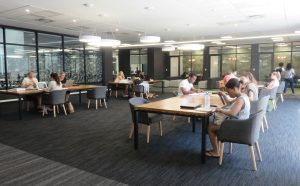
In both 2016 and 2017 the Library embarked on huge journal evaluation projects, in consultation with faculties.
In addition to the cancellation of lesser-used journals, the comprehensive Wiley journal package was cancelled for 2018, in favour of subscriptions to a smaller number of Wiley journals. The Library now provides full-text Wiley articles from non-subscribed journals through interlibrary loans, which takes between 24 and 48 hours. The Library retains 1997-2017 backfile access to the most important non-subscribed Wiley journals, and 2010-2017 backfile access to other Wiley journals.
How to access Wiley journals to which the Library subscribes on a title-by-title basis since January 2018
A list of such titles can be found here. Full-text access to the electronic backfiles of these titles remains available.
Full-text access to Wiley journals up to 2017
The Library retains access to the 1997-2017 content of some non-subscribed Wiley journals, and to the 2010-2017 content of other Wiley journals. A list of such titles can be found here. Options to access these:
- Library database list – W – Wiley Online Library
- Specific journal titles: Library’s A-Z list of e-journals
Requesting full-text articles through interlibrary loans
All Wiley journal articles remain discoverable up to abstract level. Should you require the full text of a non-accessible article (i.e. published since January 2018), you may request it through interlibrary loans. This service takes between 24 and 48 hours. Please note that the cost of interlibrary loans is carried by the Library, and not by academic departments.
Any further enquiries can be directed to: Naomi Visser (nrv@sun.ac.za, tel. 021 808 4433)
Mark Frier



 success stories waiting to happen”! This was a testimony from a student which was read out during the Official Opening of the newly refurbished Medicine and Health Sciences Library, at the Tygerberg Campus, on 22 May.
success stories waiting to happen”! This was a testimony from a student which was read out during the Official Opening of the newly refurbished Medicine and Health Sciences Library, at the Tygerberg Campus, on 22 May.

 lso available are six study booths fitted with comfortable benches and electrical points for e-devices. Twenty-one individual study tables, towards the back of the library, offer quiet individual reflective learning spaces with comfortable seating. All are equipped with power docks.
lso available are six study booths fitted with comfortable benches and electrical points for e-devices. Twenty-one individual study tables, towards the back of the library, offer quiet individual reflective learning spaces with comfortable seating. All are equipped with power docks.